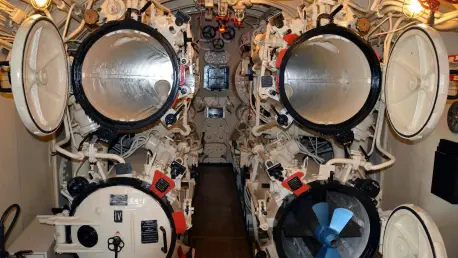In a world where national security increasingly hinges on self-reliance, the role of domestic industries in fortifying defense capabilities cannot be overstated, particularly in a maritime powerhouse like India with its vast coastline and strategic naval interests. The Steel Authority of India Limited (SAIL), a public sector titan, stands at the forefront of this mission, supplying indigenous special-grade steel that powers the Indian Navy’s fleet. This contribution not only enhances the country’s maritime strength but also aligns with broader national goals of self-sufficiency under initiatives like “Aatmanirbhar Bharat” and “Make in India.” As India pushes to modernize its naval assets and reduce dependence on foreign materials, SAIL’s efforts in providing critical steel for warships and corvettes highlight a pivotal partnership between industry and defense. This collaboration is reshaping the landscape of naval manufacturing, ensuring that every vessel commissioned represents a step toward a stronger, more independent India.
Empowering Naval Modernization Through Steel Supply
Building Advanced Warships with Homegrown Materials
The significance of SAIL’s contributions becomes evident in its supply of specialized steel for cutting-edge naval vessels, such as the Anti-Submarine Warfare Shallow Water Craft (ASW-SWC) series. Notably, the entire steel requirement for INS Androth, the second vessel in this series commissioned earlier this year, was met by SAIL, following the earlier commissioning of INS Arnala, the first in the lineup. This achievement extends to all eight corvettes under construction by Garden Reach Shipbuilders and Engineers Ltd. (GRSE), with materials sourced from SAIL’s major plants in Bokaro, Bhilai, and Rourkela. These facilities have demonstrated remarkable production capacity, ensuring that high-quality, indigenous steel forms the backbone of vessels designed for critical anti-submarine operations. Such efforts underscore how domestic manufacturing can meet the stringent demands of defense, paving the way for a robust naval fleet built on homegrown resources and expertise.
Beyond the ASW-SWC series, SAIL’s impact is felt in the construction of advanced frontline warships like INS Udaygiri and INS Himgiri, both inducted into the Indian Navy recently. With over 8,000 tons of critical-grade steel supplied for these frigates in collaboration with Mazagon Dock Shipbuilders Limited (MDL) and GRSE, SAIL has proven its ability to support large-scale defense projects. This steel, tailored for durability and performance under extreme conditions, ensures that these warships are equipped to handle modern maritime challenges. The partnerships with leading shipbuilders highlight a seamless integration of industrial output with defense needs, reflecting a strategic alignment that goes beyond mere supply to foster innovation in material science. As a result, each vessel stands as a testament to India’s growing capability to design and build sophisticated naval assets without relying on external sources.
Historical Contributions to Iconic Naval Vessels
SAIL’s legacy in supporting the Indian Navy stretches back through decades of consistent contributions to some of the most iconic ships in the fleet. Vessels such as INS Vikrant, INS Nilgiri, INS Ajay, INS Nistar, INS Vindhyagiri, and INS Surat have all been constructed using steel from SAIL, marking a long-standing relationship between the steel giant and naval defense. This historical involvement showcases a deep-rooted commitment to national security, with each ship representing a milestone in India’s maritime journey. The ability to provide materials for such a diverse range of vessels over time illustrates SAIL’s adaptability and dedication to evolving defense requirements, ensuring that the Navy remains equipped with reliable, high-performance ships capable of safeguarding the nation’s waters.
Further cementing this legacy, the Special Plate Plant at Rourkela Steel Plant (RSP) has supplied over 100,000 tons of critical-grade steel for various defense applications, including not just warships but also tanks and missiles. This extensive output highlights the plant’s pivotal role in meeting the diverse material needs of the armed forces, far beyond naval projects alone. The sheer volume of steel produced for such critical applications speaks to SAIL’s industrial prowess and its capacity to scale operations according to national priorities. By consistently delivering specialized materials across multiple defense sectors, SAIL has established itself as an indispensable partner in fortifying India’s military infrastructure, contributing to a comprehensive ecosystem of indigenous defense production.
Driving Self-Reliance in Defense Manufacturing
Reducing Dependence on Imported Materials
A central pillar of SAIL’s contribution lies in its role in diminishing India’s reliance on imported steel for defense manufacturing, aligning with the national vision of self-reliance. By developing and supplying high-quality, indigenous special-grade steel, SAIL ensures that critical naval projects are no longer tethered to foreign supply chains, which can be vulnerable to geopolitical fluctuations. This shift toward domestic production is evident in the construction of vessels like INS Udaygiri and INS Himgiri, where locally sourced materials have been seamlessly integrated into advanced warship designs. Such achievements reflect a broader trend of import substitution, allowing India to build a self-sustaining defense ecosystem that prioritizes homegrown solutions over external dependencies, thereby enhancing both economic and strategic autonomy.
This push for self-reliance also carries significant implications for national security and industrial growth, as it fosters innovation in steel production tailored to defense specifications. SAIL’s ability to meet the exacting standards of naval construction—where materials must withstand harsh marine environments and combat stresses—demonstrates a mastery of advanced manufacturing techniques. Collaborations with shipbuilders like GRSE and MDL further amplify this impact, creating a synergy that drives technological advancements in both steel production and shipbuilding. By focusing on indigenous resources, SAIL not only strengthens the Navy’s operational capabilities but also contributes to a robust industrial base, positioning India as a formidable player in global defense manufacturing with a reduced footprint of foreign reliance.
Supporting National Initiatives for a Stronger Future
SAIL’s efforts are deeply intertwined with national initiatives like “Aatmanirbhar Bharat” and “Make in India,” which aim to bolster domestic manufacturing and reduce external dependencies across sectors. By supplying the backbone materials for the Indian Navy’s fleet, SAIL embodies the spirit of these campaigns, ensuring that every warship and corvette commissioned is a product of Indian innovation and resources. This alignment with government policies not only enhances the Navy’s strength but also sets a precedent for other industries to follow, demonstrating how public sector enterprises can lead the charge in achieving self-sufficiency. The impact of such contributions extends beyond defense, inspiring confidence in India’s ability to meet its own needs through homegrown expertise and production.
Looking ahead, SAIL’s role in supporting these initiatives offers a blueprint for future collaborations between industry and defense sectors, promising continued advancements in naval capabilities. The focus on indigenous steel production must remain a priority to sustain this momentum, with investments in research and development to further refine materials for next-generation vessels. Strengthening partnerships with shipbuilders and expanding production capacities at plants like Bokaro, Bhilai, and Rourkela will be crucial steps in this journey. As India navigates an era of heightened maritime challenges, SAIL’s commitment to providing critical materials ensures that the Navy is well-equipped to protect national interests, reflecting a legacy of resilience and innovation that shapes a stronger, more self-reliant defense framework.









